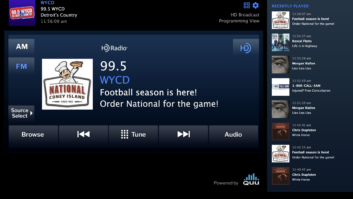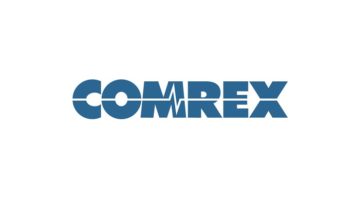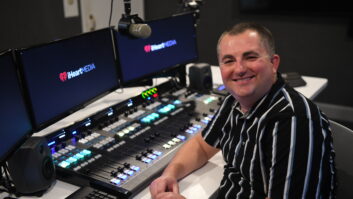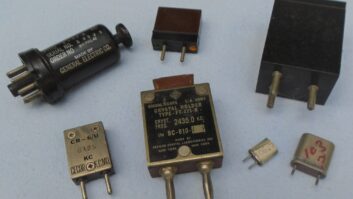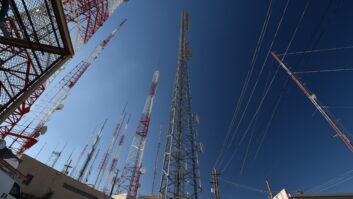The author is vice president of WRNJ Radio in Hackettstown, N.J.
WRNJ, Hackettstown, N.J., will be filing a petition with the FCC requesting they explore moving AM band stations to the near-vacant 45 to 50 MHz VHF band.
The AM band is no longer capable of providing a quality service to its communities for several reasons. Noise, skip, overly expensive antenna systems, varying hours of operation, and directional patterns to name just a few immediate issues. And lack of listeners!
WRNJ suggests the FCC consider the digital transmission DRM+ system, along with a simple vertical only, non-gain antenna. The VHF 1 band is ideal for local/regional coverage. Exactly the local service that was expected during the early days of AM would return.
[Overcoming DAB+ SFN Challenges]
The two-way radio licensees of the 45-50 MHz band have all but fled the band for either trunked or cell service. This ended the expense and maintenance of low band FM mobile radios for the many users. Also, Motorola and Kenwood, it is reported, no longer manufacture low-band equipment. A scanner covering 45 to 50 MHz at a tower with reception from New York City to Philadelphia can go days before hearing a single carrier.
International regulations for ITU Regions Two and Three already call for broadcasting between 47 and 50 MHz. As previously mentioned, the band is ideal for local/regional coverage and can provide Americans with the latest technology from their local stations.
It would be wise for broadcasters to familiarize themselves with all the capabilities of the DRM+ modulation scheme; it’s far from just an audio transport. Many countries in (ITU Regions Two and Three) are already embracing the DRM+ standard, which is so far superior to anything we’re presently using the USA. Why should we wait any longer?
THE CASE FOR DRM+
In July 2008, the Broadcast Maximization Committee published the results of their study on AM and proffered the concept of converting the Channels 5 and 6 to digital AM’s, LPFM, NCE’s et.al. (See http://www.broadmax.org/wp-content/uploads/2010/12/proposal.pdf)
That was 12 years ago and nothing has been done about it.
With this proposal, we would avoid AM noise, nighttime interference, adjacent channel issues and eliminate the awful fidelity issues. There is occasional skip on the proposed band. Adjacent TV channel 2 survived it for 50 plus years. Skip is infrequent and probably won’t have the deleterious effects experienced with analog. There is skip on the AM band every night!
Additionally, DRM+ channel efficiency is more compact than present channel spacing. Spectrum efficiency vastly exceeds anything we’re using today. The implications of that efficiency are evident. Far more information can be packed into DRM+ in much less space.
A basic explanation of DRM+ can be found here. A more technical explanation can be found at this location. Note in the video that 1 kW ERP of DRM+ equals the same coverage as a 5 kW conventional installation. An efficient system lowers the electric bill. The proposed vertical antenna of unity gain reduces tower loading and or rent.
OVERCOMING DRM+ OBSTACLES
There are no receivers! Right. However, the current state of the art in chipsets is such that most new receivers could be capable of decoding both DRM+ and HD Radio systems.
In light of this, we propose a transition period of years for this to come to fruition. American broadcasting has spent tens of millions on moving TV facilities, and the market responded to the shifts in frequency and modulation schemes. The AM band, too, was extended and radio manufacturers responded. Simply stated, if not now, when?
The AM band is beyond practical (economical) use at this juncture. The transmission systems are onerous, to say the least. We have to live within the bounds of physics, and that, simply put, eliminates today’s AM band as it is currently structured.
Japan will soon be amongst the nations that terminate AM radio — at the request of AM operators! Italy is converting to DRM+, too.
We propose that AM operators simulcast the new and old band until the market dictates the AM shutdown of dual facilities. We propose the system be local and that any who might wish to stay with AM be free to stay there.
Also, with this migration, we expect the AM band may again have a chance for wide area service from those who can increase power and coverage upon spectrum availability resulting from the migration to DRM+ VHF. The FM band would be relieved of the congestion it’s now experiencing from translators. We would hope that the ownership remain local and avoid the dereliction of local community service that came with ownership-consolidation.
[Subscribe to our newsletter and get it delivered right to your inbox.]
Is there any better time to start this than now? I can’t think of one real negative, can you?
We look forward to your input if and when the FCC moves forward with the petition for rulemaking.

